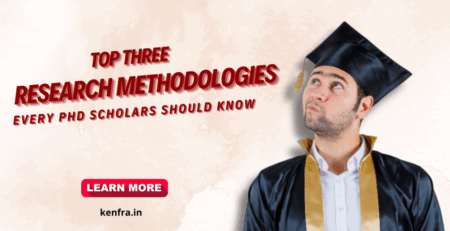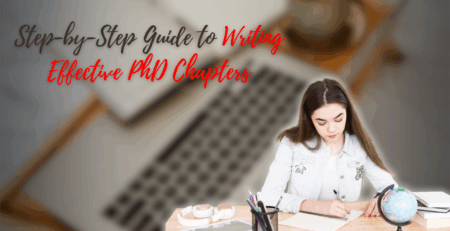How to Present a Research Poster at a Conference? 10 Proven Tips for Researchers
Kenfra Research - Bavithra2025-09-22T16:53:36+05:30Presenting a research poster at a conference is one of the most effective ways to share your academic work with peers, mentors, and other researchers. Research poster presentation tips are important to make sure your work gets noticed and easily understood. A well-prepared poster shows your key findings, can lead to collaboration opportunities, and leaves a good impression. Whether you are a PhD student, a new researcher, or an experienced academic, following these tips can make your research more effective. In this guide, we share 10 proven strategies to help you give an excellent research poster presentation at any conference.
10 Research Poster Presentation Tips Every Scholar Should Know
1. Define Your Objective Clearly
Before creating your poster, define its main purpose. Ask yourself: What is the key message I want my audience to take away? This clarity allows you to focus on the most important information without overwhelming viewers.
For instance, if your research introduces a new methodology, emphasize its innovation and potential applications. If your study presents results from an experiment, highlight the most significant findings. Clearly defined objectives make your poster easier to understand and more impactful.
2. Design a Visually Engaging Poster
A visually appealing poster draws attention and keeps the audience engaged. Use a clean layout, readable fonts, and high-quality graphics. Colors should enhance readability, not distract. Avoid overcrowding your poster with text or excessive images.
Including diagrams, flowcharts, or infographics can make complex data more digestible. Online tools for academic poster presentation, such as Canva or PowerPoint templates, can help create professional posters even if you are not a graphic design expert.
3. Use Concise and Clear Language
A poster should communicate research efficiently. Use short sentences, bullet points, and headings. Avoid technical jargon unless necessary, and explain key terms.
Concise language ensures your audience can quickly understand your research during busy conference sessions. For example, instead of writing “The experimental outcomes indicate significant deviations in the control variable,” say, “The experiment shows clear differences in the control variable.”
4. Organize Content Logically
A well-structured poster follows a logical flow: Introduction → Methods → Results → Discussion → Conclusion. Use headings and subheadings to guide viewers.
Logical organization allows attendees to follow your research narrative without confusion. Consider using numbered sections or visual cues to lead the audience through your story. Including a small “takeaway box” with key points can also enhance clarity.
5. Highlight Key Findings Visually
Use charts, graphs, or tables to make your results stand out. Visual elements help the audience understand data faster than text alone. Highlight the most important findings with bold text or colored boxes.
For example, if your research identifies a trend, include a simple line chart. If comparing groups, use a clear bar chart. Visual emphasis ensures your key results are memorable and easy to interpret.
6. Prepare a Concise Elevator Pitch
Prepare a 1–2 minute explanation of your research. This “elevator pitch” introduces your study, highlights key findings, and invites questions. Practicing this pitch ensures you can engage attendees confidently, even during short interactions.
An effective elevator pitch should include:
- Research question or problem statement
- Methodology overview
- Key results or discoveries
- Implications or applications

7. Engage Your Audience Effectively
Audience interaction is crucial. Make eye contact, smile, and encourage questions. Ask attendees for their opinions or invite discussion. Engagement improves understanding and can open doors for collaboration.
Additionally, offering handouts or digital copies of your poster allows the audience to review your work later. Engaging with attendees beyond the poster session, such as via email or professional networks, can extend the impact of your research.
8. Avoid Common Mistakes
Avoid common pitfalls such as overcrowded text, unreadable fonts, unclear visuals, or lack of preparation. Review other posters for inspiration and seek feedback before the conference.
Other mistakes to avoid:
- Ignoring audience questions
- Reading directly from the poster instead of summarizing
- Using too many colors or complex graphics
By avoiding these errors, your poster presentation will look professional and communicate your research effectively.
9. Practice Your Presentation
Rehearsing helps refine your delivery, manage time, and anticipate questions. Practice with peers or mentors to get feedback. This builds confidence and ensures you can explain your research clearly under pressure.
Additionally, practicing helps you remember key talking points, manage technical issues, and adapt to audience reactions. Well-prepared presenters are often more memorable and respected at conferences.
10. Follow Up After the Conference
Collect contacts, discuss potential collaborations, and share your poster digitally. Following up ensures your work reaches a broader audience and strengthens academic relationships.
You can also post your poster on professional networks like ResearchGate or LinkedIn. Engaging with colleagues after the conference helps build your academic reputation and opens opportunities for future research partnerships.
Conclusion
Mastering research poster presentation tips is essential for every researcher who wants to communicate findings effectively. From defining a clear objective and designing an attractive poster to engaging your audience and following up afterward, these 10 strategies will make your poster stand out at any conference. Applying these tips not only increases the visibility of your research but also fosters meaningful academic connections. For additional support and guidance, Kenfra Research offers expert resources to help researchers prepare and present their work professionally, maximizing both impact and opportunities for collaboration.








Leave a Reply